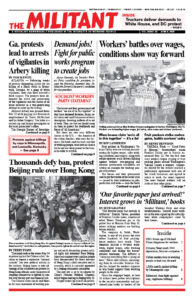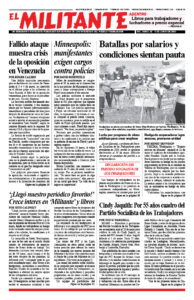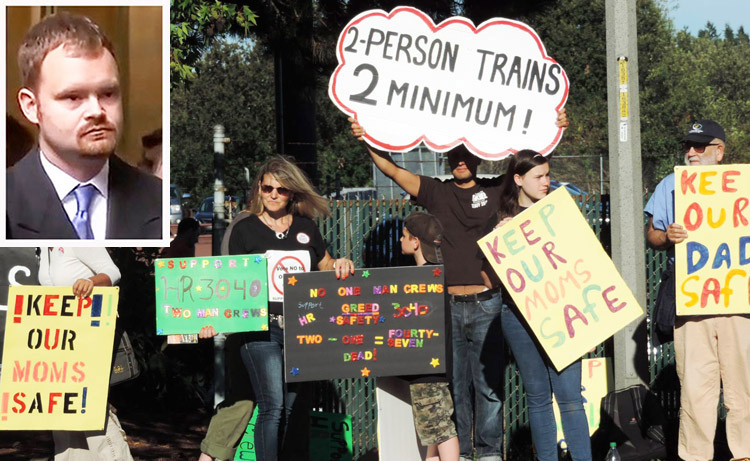PHILADELPHIA — For the last five years Amtrak engineer Brandon Bostian, a member of the Brotherhood of Locomotive Engineers and Trainmen, has been hounded by prosecutors and government officials determined to frame him up for a 2015 passenger train derailment here in which eight people died and over 200 were injured.
Pennsylvania Superior Court Judge Victor Stabile reinstated criminal charges against Bostian May 14, overturning a July 2019 ruling by Philadelphia Court of Common Pleas Judge Barbara McDermott, who found Bostian did not commit any crime. Stabile claimed the case must be evaluated not by a judge in a preliminary hearing, but in a trial.
Stabile’s decision was hailed by state Attorney General Joshua Shapiro, who had brought the original charges against Bostian May 12, 2017, the last day before the statute of limitations ran out. That same week the Philadelphia district attorney refused to file charges, saying — as did Judge McDermott — there was simply no evidence of criminal intent.
In September 2017 a Philadelphia Municipal Court also dismissed the charges, only to have the ruling overturned in Common Pleas Court.
For the third time Bostian now faces charges of reckless endangerment, causing a catastrophe and involuntary manslaughter. “This was an accident and not a crime, and we will appeal,” Bostian’s lawyer, Brian McMonagle, told the press.
On May 12, 2015, Bostian was the engineer on Amtrak Northeast Regional Train 188 when it derailed after accelerating from 70 to 106 mph at the Frankford Junction curve, which has a 50 mph speed limit. With 14 years of experience and respected for his concern for safety by fellow engineers, Bostian had suffered a head injury and does not remember the crash.
Minutes prior to the derailment two engineers running nearby trains reported projectiles hitting their cabs. The engineer’s window on a SEPTA commuter train was broken and an Amtrak Acela train window shattered. Cracks in the windshield of Bostian’s train indicates it may also have been hit.
In 2016 the National Transportation Safety Board issued a report blaming the accident on the fact the engineer’s “attention was diverted to an emergency situation with a nearby SEPTA train that had made an emergency stop after being struck.” Bostian tested negative for drugs and alcohol, and was found to have not been using his cellphone.
“If a second engineer had been present to assist the engineer of Train 188 in managing the multiple tasks confronting him,” Dennis Pierce, national president of the Brotherhood of Locomotive Engineers and Trainmen, told the press, “there would have been no accident.”
When the government-funded passenger line was created in the 1970s, Amtrak locomotive cabs were required to have at least two crew members. But to cut costs, Amtrak has refused since 1983 to crew Northeast Corridor train cabs with more than an engineer.
Crew cuts are a major issue that endangers all rail workers and people in the cities and rural areas they operate in.
Efforts to frame up Bostian for the crash began immediately following the derailment. “Clearly he was reckless and irresponsible in his actions,” said Michael Nutter, Philadelphia’s mayor at the time, with no evidence to back it up.
After the crash Amtrak finally installed at Frankford Junction a safety system called “positive train control.” It’s designed to slow down and stop any train going above the speed limit. Rail unions have been demanding this for years, and Congress ordered the rail bosses to deploy it nationwide. But the railroad owners postponed doing so for years, claiming it was too expensive.
“Our campaign gives full support to the fight by rail worker Brandon Bostian against this frame-up,” Osborne Hart, Socialist Workers Party candidate for U.S. Congress in Pennsylvania’s 3rd District, told the Militant. “Time and again, rail workers are blamed by the bosses and the government for accidents when it’s the bosses who are the real culprits. They slash work crews, disregard safety and gut working conditions in search of higher profits.”


